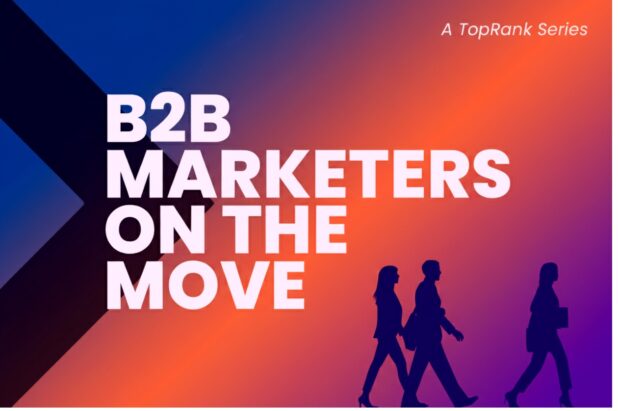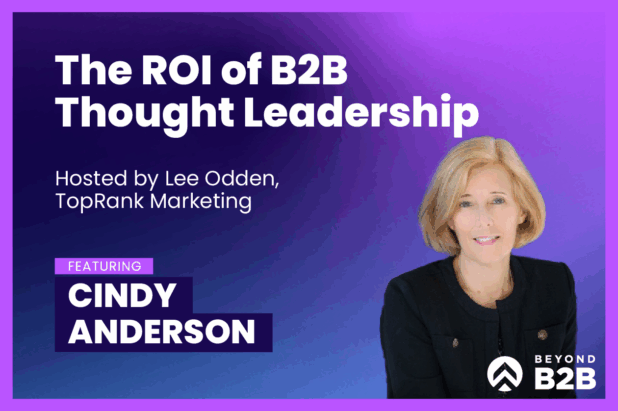 The next in our series of interviews with Minnesota based, social media savvy marketing and public relations professionals is Greg Swan, Digital Account Group Manager at Weber Shandwick Digital.
The next in our series of interviews with Minnesota based, social media savvy marketing and public relations professionals is Greg Swan, Digital Account Group Manager at Weber Shandwick Digital.
Greg manages and executes interactive public relations programs for Weber Shandwick clients across consumer, technology and public affairs industries. As the social media team lead, Greg oversees the U.S. Army’s social media efforts, including pioneering instant messaging and mobile programs and the launch of the Army’s first-ever Soldier blog. Greg has helped clients, such as The Coca-Cola Company, Snickers, Verizon and Chevrolet, take the big leap into the social mediasphere to influence consumer behavior online and create authentic engagement.
You’re in an elevator going to the 45th floor (NYC) and you’re asked what you do. What’s your reply? If that happened in any other city, would your answer be different?
My role as a digital strategist at Weber Shandwick is to help colleagues and clients understand, embrace and leverage the marketing opportunities that are created by the ever-changing social dynamic that’s fostered by new technologies. I love thinking about what’s next and helping brands experiment with emerging social marketing techniques. Or if I’m riding in an elevator with my Grandma, I would say, “I do marketing.”
Where did Perfect Porridge come from and where can I get some?
I’ve always loved music. I probably own a couple thousand CDs by now and don’t even want to know how much money I’ve spent on concert tickets over the years. I was a journalist for a short time in college — wrote for the alternative newspaper in town and was editor-in-chief of an arts magazine I co-founded. So when my wife and I moved to Minneapolis, I needed an outlet for that passion for writing and sharing news, and a music blog was the perfect outlet for both passions.
It’s been more than four years now, and my little music blog has grown into an AllTop.com-accredited destination for national and local music news, mp3s, video and reviews. I’m receiving more than 100 PR pitches a day and about 50 albums a month to review. Although that’s a tad overwhelming, I’ve developed long-term relationships with PR firms, record labels and publicists vying for coverage — yielding experience that helps me inform Weber Shandwick clients on blogger engagement strategies beyond the blind e-mail pitch..
Let’s try something different. I’m going to list a few words or phrases and it would be great to get your initial thoughts on each. What’s the most important thing for each topic companies should be thinking about for 2010?
Reputation management: Online reputation management is going to be a hot topic in 2010. A sizable 84 percent of global senior executives surveyed by the Economist Intelligence Unit reported that reputation risk increased significantly over the past five years. When executives were asked to choose among 13 risk types, reputation risk emerged as the most significant threat to global corporate business. As company, brand and product reputations fluctuate and/or deteriorate worldwide — and the real-time Web becomes “the” destination for breaking news, scandal and crises — marketers need to proactively engage reputation radar systems to identify, track and respond to approaching reputation threats, as well as find ways to locate and empower brand advocates. It’s my belief inoculation strategies today are crucial. As my boss always says, “Fill the sandbags before the flood.”
Search and PR: In my opinion, search marketing — both organic and paid — should be part of a complementary marketing mix. Organic search results are a continuation of an online reputation management framework, as well as a core part of any proactive campaign. There’s a philosophical debate happening right now about the utility of static URLs in a world dominated by search. For example, if a consumer wants to learn the latest news about a certain sports star scandal or the availability of a new energy drinks, they’re more likely to start at Google then visit a static URL homepage. In 2009, your marketing program could be helped or hindered by those first 10 links the search results. In 2010, it would mean success or failure.
Social Media and PR: At the Public Relations Society of America’s General Assembly in 1982 the attendees came to an agreement on the definition of PR: “Public relations helps an organization and its publics adapt mutually to each other.” For decades, reaching the masses with marketing messages required utilization of mass media (e.g., newspapers, magazine, radio, television). The most visible aspects of the PR industry today centers on pitching these legacy mediums to share an organization’s messages with its publics. But beyond the publicity and media relations aspects of public relations, PR pros have always been listening to what consumers think about companies and issues, building grassroots networks, fostering word of mouth campaigns and seeking two-way communication with those same publics. In 2010, PR is still the same marketing discipline it’s always been, but we have different tools to meet our clients’ objectives. The social Web has increased the velocity and momentum of these community building and social marketing initiatives. In my opinion, PR is perfectly suited to operate in the social mediasphere.
PR Measurement: I love this topic. Measurement is so important to all marketing campaigns, but the accepted norms are changing. Traditional PR measurement may include circulation, impressions, pass-along and advertising equivalency. These are all good baselines for traditional coverage. However, the nature of social media requires a shift in ROI focus from traditional, media-driven metrics to more progressive, participatory metrics. It is critical that an organization develop acceptable, understandable and meaningful measures of ROI, and agreed-upon benchmarks and stretch goals, as well as marketing plans to meet those goals. Depending on your objectives, your goals will be vastly different. If a company isn’t sure where to start or what would be successful, a good starting place is to start logging analytics as a benchmark today. A great way to know where you’re going is to know where you’ve been. Start by keeping track of total visits, number of posts, number of comments/likes and number of friends/followers in a detailed record that can be extrapolated over time. Six months from now, you’ll have a good idea if 20 comments on a blog post is “good.” Digging deeper than number of comments, we’ve developed a Digital Media Scorecard that can analyze the volume, content and sentiment of online conversations about a company or brand and then assign a numeric value to it. This is an even better way to assign quantitative measurement to qualitative engagement.
Future of the PR industry: Like all marketing practices, the PR industry will evolve to help their clients utilize new technologies to connect with their publics. We recently got rid of all of our fax machines across the office in favor of integrated copier/printer/fax units, and I thought that was a telling sign that the more things change the more they stay the same. I may never use a fax to send a press release to a media outlet again, but I’m glad I know how to send a fax if I need to. PR has never been about the tools – phone calls, blast faxes, e-mail and media clip pasting — it’s been about relationships. That won’t change. In my opinion, PR is going to see explosive growth as more senior leaders get over the technology barrier.
For companies that are trying to wrap their arms around the digital space, especially when it comes to brand, influence and the media, what are some of the larger issues they should consider before engaging outside help? What can they do to take better advantage of digitally savvy PR consulting? Think of that scene from Jerry Maguire, “help me, help you”.
You had me at “digitally savvy,” Lee. For starers, I’m a big believer in internal inventories to give brands and outside contractors the most accurate and up to date intelligence to layer digital strategies upon. For example, we’ve developed a client checklist to help brands clearly understand where they already have assets, resources and opportunities. Do you own your online profile in the intuitive places (e.g., URLs, social networks)? Do you know who in your company has the username/passwords? Do you have an internal and/or external social media policy, and if not, what are the steps to writing and approving one? What mainstream or online media monitoring and measurement practices do you already have in place? Is your company subject to regulatory standards that prohibit certain social marketing activities? You get the idea. The next step is agreeing upon a measurable objective. Then charge your internal and external marketing partners to focus their efforts on developing strategies to meet that measurable objective. Show me the money!
What advice do you have for companies still feeling uncertain about active engagement on the social web when it comes to dealing with budgeting and resource issues?
Remember that only a small percentage of both B2C and B2B companies are engaged in the social Web, and of those, even fewer are doing a tremendous job. The bar is still low, and recognizing an opportunity and digging into the resource and dollars is a great first step. From there, start a small project with a low-hanging fruit measurable objective. Execute, evaluate and try again. Baby steps go far in social marketing, particularly over the long-term.
Our readers love tips, so please share a few practical tips for getting a social media PR effort off the ground, assuming specific objectives have been identified, such as increased placement & mentions on online news sites, blogs and industry publications.
Agree upon measurement for the specific objectives, even if they seems innocuous (e.g., 5% increase in Facebook friends).
Identify company spokespeople who are available and willing to react to positive and negative online news, in both official and unofficial channels (e.g,. Corporate blog/Twitter, as well as message boards, newspaper article comments).
- Do a deep dive into the social media buzz around your campaign topic.
- Identify influencers, advocates and badvocates and transparently reach out to them ahead of a formal pitch. Ask them questions that will make your campaign better, stickier and more sharable.
- Build relationships you can leverage when you’re ready for the ask.
- Set up a comprehensive Google Alert (www.google.com/alerts) to get a sense of what’s being said about a brand, product, spokesperson, etc. in real time both now and throughout the campaign.
- Keep detailed reports and post-campaign develop a summary that includes successes and key learnings. Evaluate, adjust and try again
What are 3-4 resources (blogs, books, podcasts, web sites, newsletters, conferences, etc) for staying on top of digital and social media public relations?
- http://www.socialmediatoday.com/ is a curated blog that publishes the best of the best social marketing writing every day.
- http://mashable.com/ publishes daily articles about the latest and greatest applications and innovations happening in social media.
- http://sxsw.com is my favorite annual interactive conference and the one event a year I can count on recharging my creative batteries with a host of new thinking and status quo-challenging.
Minnesota is a treasure trove of companies and talent in the digital, interactive and social media space, yet a bit of a “best kept secret” compared to the coasts. Please describe some of what impresses you about the Twin Cities digital community?
The marketing community here in the Twin Cities has continued to grow, innovate and produce a tremendous quality of work in the interactive space. From Fortune 500 brands headquartered here to big name clients tapping local talent, the scope, scale and reach of Twin Cities-touched interactive work is something of which we should all be immensely proud. The community itself and the opportunities that arise from plugged in and passionate individuals coming together inspires me. For example, there is the Minnesota Interactive Marketing Association (MIMA), which boasts one of the largest memberships of any IMA, as well as some of the largest monthly and annuals events (disclaimer: I’m on the board). On the grassroots side, there are 1,400 members of Social Media Breakfast (SMB) who sell out ad hoc breakfast events for 300 in under three minutes. From a market-impact perspective, the buzz and community of the Twin Cities metro area is unparalleled.
Fun question: If you could be a single social media application, service or web site, what would you be?
I would be a widget. Widgets are dynamic, updatable, sharable, and the best ones can adapt to anywhere they’re placed. Grab me!
Find more about Greg Swan on the social web:
Twitter http://www.twitter.com/gregswan
LinkedIn https://www.linkedin.com/in/gregswan
Blog http://www.perfectporridge.com


